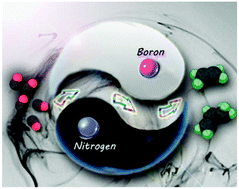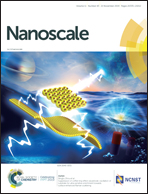Frustrated Lewis pairs photocatalyst for visible light-driven reduction of CO to multi-carbon chemicals†
Abstract
Photocatalytic reduction of carbon monoxide (CO), an increasingly available and low-cost feedstock that could benefit from CO2 reduction, to high value-added multi-carbon chemicals, is significant for desirable carbon cycling, as well as high efficiency conversion and high density storage of solar energy. However, developing low cost but highly active photocatalysts with long-term stability for CO coupling and reduction remains a great challenge. Herein, by density functional theory (DFT) computations and taking advantage of the frustrated Lewis pairs (FLPs) concept, we identified a complex consisting of single boron (B) atom decorated on the optically active C2N monolayer (i.e., B/C2N) as an efficient and stable photocatalyst for CO reduction. On the designed B/C2N catalyst, CO can be efficiently reduced to ethylene (C2H4) and propylene (C3H6) both with a free energy increase of 0.22 eV for the potential-determining step, which greatly benefits from the pull–push function of the B–N FLPs composed of the decorating B atom and host N atoms. Moreover, the newly designed B/C2N catalyst shows significant visible light absorption with a suitable band position for CO reduction to C2H4 and C3H6. All these unique features make the B/C2N photocatalyst an ideal candidate for visible light driven CO reduction to high value-added multi-carbon fuels and chemicals.



 Please wait while we load your content...
Please wait while we load your content...